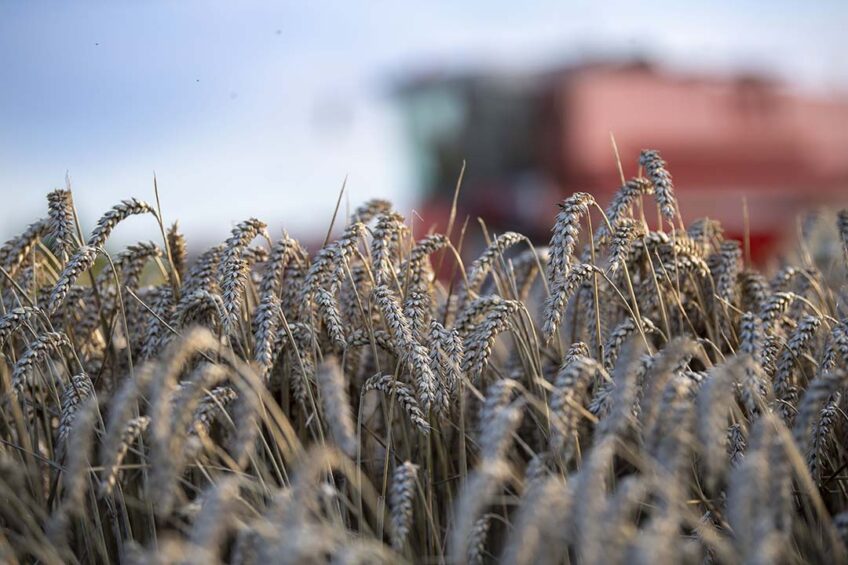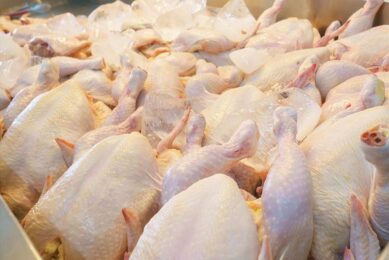Global poultry sector shows signs of recovering market growth

Analysts are hopeful that the global poultry market will grow by between 1.5% and 2% during 2024 as the sector takes advantage of declines expected in the beef and pork sectors. An ongoing focus on efficiency and affordability remains vital, however.
Lower input costs, and therefore lower-priced chicken, should help stimulate poultry consumption in 2024 and accelerate growth in the industry. While the rate of growth in the poultry market represents a slowdown from the long-term average of 2.5%, it shows signs of recovery from the 1.1% rise in 2023. Indeed, poultry is expected to be the fastest-growing animal protein during 2024, according to RaboResearch, which forecasts the global animal protein market to grow by just 0.4% year-on-year.
Most growth is expected in Southeast Asia, the Middle East and Latin America, albeit at below-average levels. Producers will need to keep balancing supply growth with relatively slow demand growth, particularly in the US, Thailand, Indonesia, and, more recently, China and the European Union that have been struggling with oversupply. Price-driven markets will be an ongoing challenge for producers during 2024 as the industry will still face relatively high costs and potential volatility.
As consumer spending power is expected to gradually recover, the focus on prices will be less than in 2023, while demand for higher-value and premium products will improve.
Lower feed costs
Feed costs will move slightly lower but global geopolitical issues – such as the ongoing Ukraine war and turmoil in the Middle East – could affect feed costs, as well as oil and gas prices. Weather risks posed by climate change also need to be considered, as El Nino will present more challenges than opportunities depending on its intensity. For example, reduced grain production due to dry conditions during El Nino in Australia could cause upward pressure on feed costs, while adverse seasonal conditions and weaker monsoons in Asia will also lead to issues.
Some sectors are going to do better than others, argues RaboResearch in its First Quarter (Q1) 2024 report. Raw chicken will continue to grow but the processed poultry meat trade is expected to remain slow in foodservice markets in key import countries, challenging global traders in Brazil, Thailand and China. But the market will gradually recover with improving consumer spending power.
Avian influenza threat
The disease threat posed by avian influenza will remain a major challenge, with early winter season outbreaks expected in the northern hemisphere and major impacts in South Africa. More countries will start vaccination, alongside strong biosecurity measures, to address this. However, given the trade implications that come with vaccinated flocks, some nations will remain reluctant to go down the vaccination route.
The potential for highly pathogenic avian influenza to infect commercial farms in Brazil is a focal point of global disease risk, given that it is the world’s largest exporter of poultry and important for the breeding system in South America. RaboResearch says that in this price-led market, still driven by high and volatile input costs and avian influenza risk, producers need to focus on optimal efficiency, procurement and biosecurity.
Animal protein market
Adapting to fundamental changes to sustain success will be key for leading animal protein companies that will still need to transition their supply chain to an operating environment with relatively high costs and tight margins. In its wider look at the animal protein sector, Rabobank says that some of the changes in market conditions that will be seen in 2024 are more permanent rather than cyclical in nature.
Demographic changes, for example, will tighten labour markets and reduce population growth, raising production costs and slowing consumption growth. And new investment will be needed to improve productivity and upgrade production systems to meet market and regulatory demands and consumer preferences, such those as around sustainability. To sustain success, companies should:
- Double-down on productivity improvement efforts
- Consider strengthening their supply chain partnerships
- Review their portfolios
- Increase investment in new product development to enhance the match to the market
- Adjust their pricing strategies to the higher cost base, for example, global red meat, poultry and seafood prices continue to trade at a higher range than where they ended in the previous decade.
Sustainability goals
Greenhouse gas emissions and other sustainability goals are continuing to take shape and Rabobank says animal protein companies need to connect upstream supply chain actions with their own operations, with supply chain traceability a key tool.
Traceability serves as a catalyst for multi-stakeholder collaboration, with retailers requesting detailed data from upstream supply chains to enable reporting, foster accountability for industry-wide goals and drive advances at scale. With more firms moving to report voluntary goals under the Science Based Targets initiative (SBTi), it is expected that animal protein supply chains will begin exploring product claims and labelling, alongside emissions reduction progress.
Regional differences
Looking at specific global regions, Rabobank sees gradual production increases and steady growth in North American poultry with a 1.7% year-on-year increase in US broiler production in 2024, while Mexican broiler volumes should again a 2% year-on-year growth. Turkey production, while susceptible to avian influenza, is also on the rise, up 5.1% year-on-year.
In Europe, the poultry sector faces challenges with increasing production, peaking imports and easing prices all impacting supply growth for 2024. More supply discipline will be needed to rebalance EU poultry markets as long as large volumes of chicken enter European markets from Ukraine and affect the European wholesale chicken market. Growth is expected to slow to about 1.5-2%. But it’s in a better position than the UK where the outlook remains fragile and growth likely to be just 0.5%.
China’s poultry market is heading for a better balance in 2024 due to the expected recovery in food service and food catering, although supply growth is set to be hindered by low breeding stock levels caused by low imports in 2022 and the first half of 2023 following highly pathognic avian influenza outbreaks in some exporting nations. As a result poultry prices are expected to improve, driven by both demand recovery and supply constraints.
In Southeast Asia there are some positive signs of growth on a bumpy road – African Swine Fever has had a significant impact on the Thai poultry sector due to falling domestic prices. Consumption for 2024 is likely to slow to 1.5-2% with production at 1-1.5%. Most growth should be realised through improved exports, up by 3-4%.





![Birthe Steenberg, AVEC’s Secretary General: “Our [poultry] sector operates under the highest standards of animal welfare, biosecurity and sustainability in the world. Photo: Canva](https://www.poultryworld.net/app/uploads/2024/10/Untitled-design-79-389x260.jpeg)







